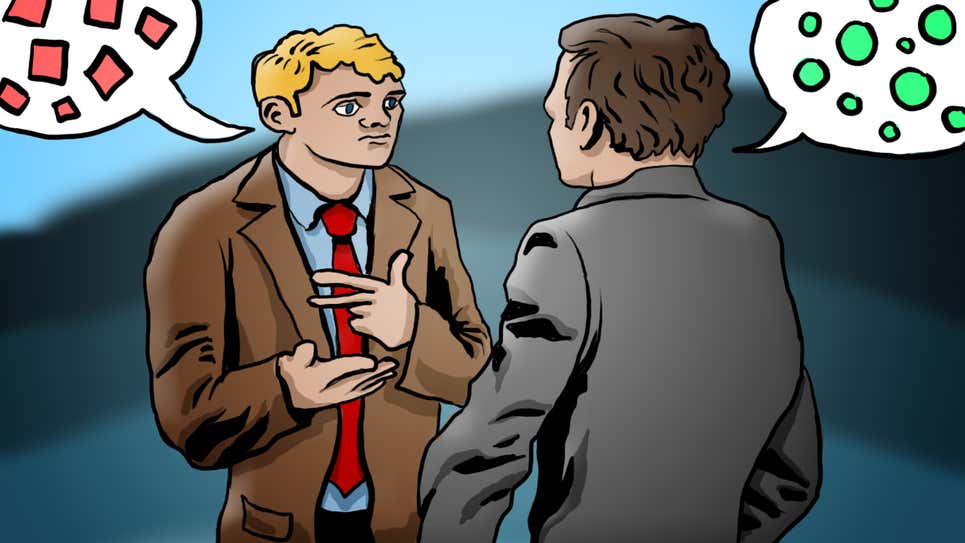Most negotiation books or courses emphasize the importance of figuring out the dominant negotiating style of the party sitting across the table from you. As Chriss Voss, a former FBI hostage negotiator and author of Never Split the Difference: Negotiating as If Your Life Depends on It explains, there are basically only three: Accommodator, Assertive, and Analyst.
Below is a brief description of each type. You don’t have to be engaged in a negotiation with an outside party to see discern these styles. Look within your organization and extended family. They are all there.
ANALYST
As the word implies, these people are thorough and analytical. They like to take their time to think through. They do comprehensive background research. They like to take their time in coming up with answers. They are skeptical by nature.
They are ruled by logic and expertise. To win them over, give them lots of facts and time to make decisions. You could think of them as experts in their chosen area.
ACCOMMODATOR
They are relationship-driven, more likely to compromise to reach a deal. Whether there’s agreement or not, they still want to stay on friendly terms with you. As Voss explains, “If your counterparts are sociable, peace-seeking, optimistic, distractible, and poor time managers, they’re probably Accommodators.”
Diplomat is another word to describe them. They abhor conflicts and prefer not to rock the boat.
ASSERTIVE
These are people are quick, efficient, direct and instinctive. They love winning. They want to be heard. They tell rather than ask. They are focused on their own goals, not the relationship. The key to having a smooth negotiation with this type is to make sure they feel heard first before you put forward your viewpoints.
They are the kind of people who give an inch and take a mile.
You could think of this type as the “achiever” and “opportunist.” They want to meet their goals and they want to win.
MATCHING STYLES: KEY TO A DEAL?
Observe a couple who has been married for a long time – and by that I mean at least seven years or more – and you will see that when seen in public, unconsciously they mirror one another. Their speech, gestures, walking pace are similar.
It’s well-known that if you want to build rapport with someone, just mirror the other person’s gestures and mannerisms.
Imagine going on a blind date. You’re spontaneous and gregarious while the other is reserved and reflective. Chances are it was a poor match and nothing more would happen afterward.
So what happens when the assertive is matched against the accommodator type in a real-world negotiation? The latter is likely to be at a disadvantage.
An assertive versus an assertive? Great. Both sides want to win. Both are quick to make a decision. Maybe a deal is not perfect, but it can be cobbled together quickly. And neither party doesn’t necessarily need any active listening skills.
An assertive matched up against the analytical type? The odds of reaching an agreement are significantly diminished. I know this first hand.
Let’s go back to the opening scene outlined earlier in part one of this series. The fund manager I dealt with is what I would describe as assertive, action-oriented type. He was the team leader with other experts working under him. He had clear targets and tight deadlines and exhibited a great deal of impatience.
He wanted to win.
On the other hand, my client was the “analyst” type. They took their time to mull over the offer. They were slow to make a decision.
Predictably there were lots of grumblings from the fund manager. So, you may ask, how did I manage to get the negotiation going in the face of incompatible styles, resulting in many iterations of a term sheet?
It was difficult, but the key here was to acknowledge the obvious. By acknowledging the elephant in the room (my client’s slow decision-making process) often, sympathizing with him, asking calibrated open-ended questions, I was able to mollify his feelings so we could continue our discussions with less friction.
GETTING OVER A NO
Recall that in part one, the negotiation between our client and the fund manager had fallen off a cliff and the latter had withdrawn his offer.
How to get things back on track?
To start with, treat it as a non-event, and not take it personally. Maybe his terminating the term sheet was an old-school, manipulative tactic. Maybe it was not. Maybe he was up to his eyeball with work and didn’t feel like to take on another project.
It was important not to overreact which means allowing time for cooler heads to prevail. I approached him again a few days later.
First, I started out by praising him and his team for his hard work and the speed and efficiency with which they conduct business. (True)
Second, I acknowledged our client’s counteroffer fell short of his expectations in some way. (It’s also true.)
Third, I got him thinking of other possibilities not by stating my client’s positions and thus butting heads with him, but by asking open-ended questions designed to get him to consider different possibilities.
And then I suggested new alternatives. I wrote, “I was just wondering, what if we were to change a few conditions, such as those listed below, would that make it worthwhile for you to engage with management? Please take a look.”
I sent off the email with a prayer.
And it worked. He reconsidered. We were off to a new negotiation again, this time with me taking the lead. For the next two months, inch-by-inch, we both systematically advanced through all the different issues one by one. We got as far as the sixth term sheet.
So was there a deal? Yes and no.
Yes, it was very close. No, because one party had nibbled too aggressively at the end.
What is a nibble?
How do you stop a nibble?









